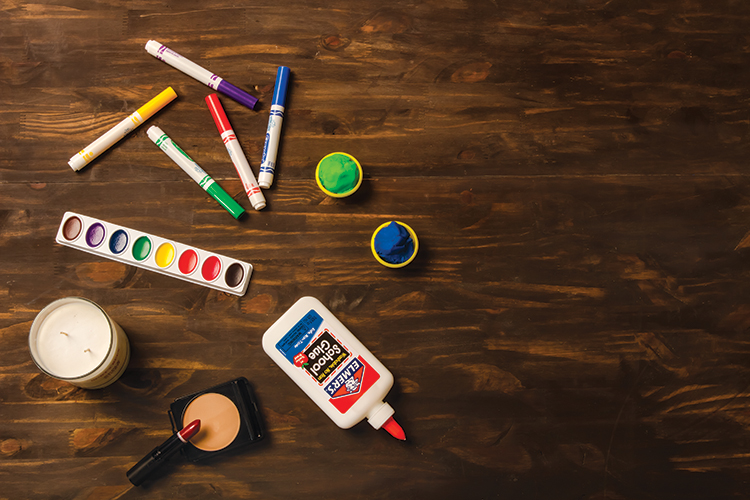Home > Mississippi > Mississippi Farm to Table > Corn and Soybeans Go Beyond Food and Fiber
Corn and Soybeans Go Beyond Food and Fiber
In partnership with: Mississippi Department of Agriculture and Commerce
 From the shampoo used in your morning shower to the colorful picture hanging on the refrigerator to the tires that move your car, Mississippi corn and soybean farmers impact more of your daily life than you might think. Several non-food and -fiber products, such as crayons, tires, shampoo, cosmetics, paint, paper products, candles and more, are all made from either corn or soybeans – two very important crops for the Hospitality State. “We’re fortunate in the state to have a lot of agricultural products that turn into a marketable product,” says Jay Moon, president and CEO of the Mississippi Manufacturers Association. “Corn and soybeans can be utilized in a variety of products.”
From the shampoo used in your morning shower to the colorful picture hanging on the refrigerator to the tires that move your car, Mississippi corn and soybean farmers impact more of your daily life than you might think. Several non-food and -fiber products, such as crayons, tires, shampoo, cosmetics, paint, paper products, candles and more, are all made from either corn or soybeans – two very important crops for the Hospitality State. “We’re fortunate in the state to have a lot of agricultural products that turn into a marketable product,” says Jay Moon, president and CEO of the Mississippi Manufacturers Association. “Corn and soybeans can be utilized in a variety of products.” New Markets
Soybeans are the state’s second- leading ag commodity, and corn ranks close behind at fifth. The multipurpose dimension of these two crops is a win- win for farmers and consumers. It strengthens the security for those farmers who grow them while teaching consumers the far-reaching uses and importance of Mississippi’s crops. Many consumers have a negative attitude toward the widely grown crops, due to the misconceptions around genetically modified organisms (GMOs), but in reality, these commodities are vitally important because they’re used in many ways other than food consumption.

Multiple Benefits
Mike Pannell, who grows soybeans and corn in New Albany with his brother, Mark, says the growing options for the two crops are certainly beneficial for his operation and other similar ones. The brothers tend 2,100 acres of mostly soybeans with about 500 acres of corn; there was no corn in 2015 due to bad weather. “A lot of the plastics and foam and similar things that are used [from soybeans] are vegetable oil- based products instead of petroleum-based,” says Pannell, chairman of the Mississippi Corn Promotion Board. “Any source of outlet where they can use this crop and the more uses they have for it, the better the supply and better the price will be.” Of course, what’s good for the farmer is also good for the manufacturer.

From Bean to Crayon
Prang Soybean Crayons – Commercially available since July 1997, Prang crayons are made from 100 percent renewable resources, using a unique soybean oil formulation instead of paraffin wax. Additionally, all Prang crayons are certified as AP Non-Toxic through the Art and Creative Materials Institute Inc. Why Soybeans? – The main difference between Prang crayons and regular crayons is the resource used to produce them. Regular wax crayons are made from petroleum oil, a non-renewable resource that comes largely from overseas. Prang crayons are made from soybean oil, a renewable resource made in America. ACMI-Certified – The Art and Creative Materials Institute Inc. (ACMI) – an international association of over 200 art, craft and creative material manufacturers – seeks to promote safety in art and creative products through its certification program. ACMI-certified product seals (AP Non-Toxic and CL Cautionary Labeling) indicate that these products have been evaluated by a qualified toxicologist and are labeled in accordance with federal and state laws.
The Process
- Farmers plant the soybean seeds in their fields in the spring.
- Farmers harvest the soybean crop in the fall.
- Soybeans are ultimately transported to the plant and stored until processing.
- The soybeans are cleaned and broken into smaller pieces.
- The small pieces of soybean are heated and rolled into thin flakes.
- Soy oil is extracted from the flakes by washing with a solvent.
- Impurities are removed from the oil through a filtration process.
- Soy wax is made from partially hydrogenated soy oil.
- Pigments are added to the soy wax. The soy wax and pigment mixture is placed in crayon-shaped molds.





My brother recommended I would possibly like this website. He was entirely right. This post actually made my day. You cann’t consider simply how so much time I had spent for this info! Thank you!